
Roopa Chauhan
October 10, 2023
Finding cultural and artistic connections between Detroit and Paris might not seem obvious because, on the surface, the City of Light has less in common with the Motor City than it might with London or New York. However, it is also not surprising because Detroit is an artist’s mecca in its own right. Known for its rich industrial past, fraught social and racial dynamics, and wide-open spaces, Detroit is perpetually reinventing itself. While Paris offers a more rarefied cultural experience, Detroit’s is visceral. Each city has its own distinctive rhythm, style, and light – all of which inspire artists.
Indeed, people from all over the world flock to cosmopolitan metropolises like Detroit and Paris bringing their cultural influences with them. There is a bit of everywhere in both places. This is reflected in many ways, but mostly through the food, people, and art. Paris’ famed art galleries are no exception to this unspoken rule. Au contraire, they thrive on the diversity and promise of renewal that an international approach brings to contemporary art.
The Zidoun-Bossuyt Gallery is a good example. Founded in 2013, it specializes in giving African-American artists a space and a voice. The gallery has showcased artists such as Summer Wheat and Noel W. Anderson in addition to holding historical exhibitions featuring Jean-Michel Basquiat. More recently, they lent pieces to the Louis Vuitton Foundation for their Basquiat vs. Warhol exhibition1
.
The gallery has three locations in Dubai, Luxembourg, and Paris. Its Parisian gallery is in the city’s Saint-Germain neighborhood and its walls are currently graced by monumental canvases inspired by Detroit’s urban and cultural vistas2. Made by American artist, Yashua Klos, these pieces explore how identity is assembled not only from within, but also from without: “one’s identity cannot be separated from the geography around them. Just as the environment is built by people, the environment in turn – builds us,” says Klos.3
Raised by a single mother in Chicago, Klos had only met his father once when he was six and then again when he was thirteen. Otherwise, he did not have any contact with the paternal side of his family. This all changed a few years ago when Klos received a Facebook message from someone claiming they were related based on a DNA test; this turned out to be true.
The discovery led Klos to reconnect with his father’s side of the family and they welcomed him into the fold without hesitation4. He learned that his father was one of fifteen children. They had all moved to Detroit from Memphis during the Great Migration when jobs in the automobile industry were plentiful.5 The experience of being reunited with his paternal family inspired Klos to honor their struggle and triumph in a piece called, “Our Labor”. The work recreates Diego Rivera’s Detroit Industry Murals with Klos’ Detroit-based relatives as the main characters.6
Detroit is also present in Klos’ second solo exhibition, aptly titled, “Building our Being”. The pieces on display embody Klos’ idea that our identity is constructed by what we build. This tension plays out on the faces and hands of the women portrayed. Fragments of the city’s architecture float on the surface of the faces, protrude from them or slice across them. Black hands hold wildflowers. They are delicate and lovely with carefully manicured nails. The image re-frames and reclaims the narrative around Black labor where hands represent hardship and work; in this piece they represent leisure and affluence.
.
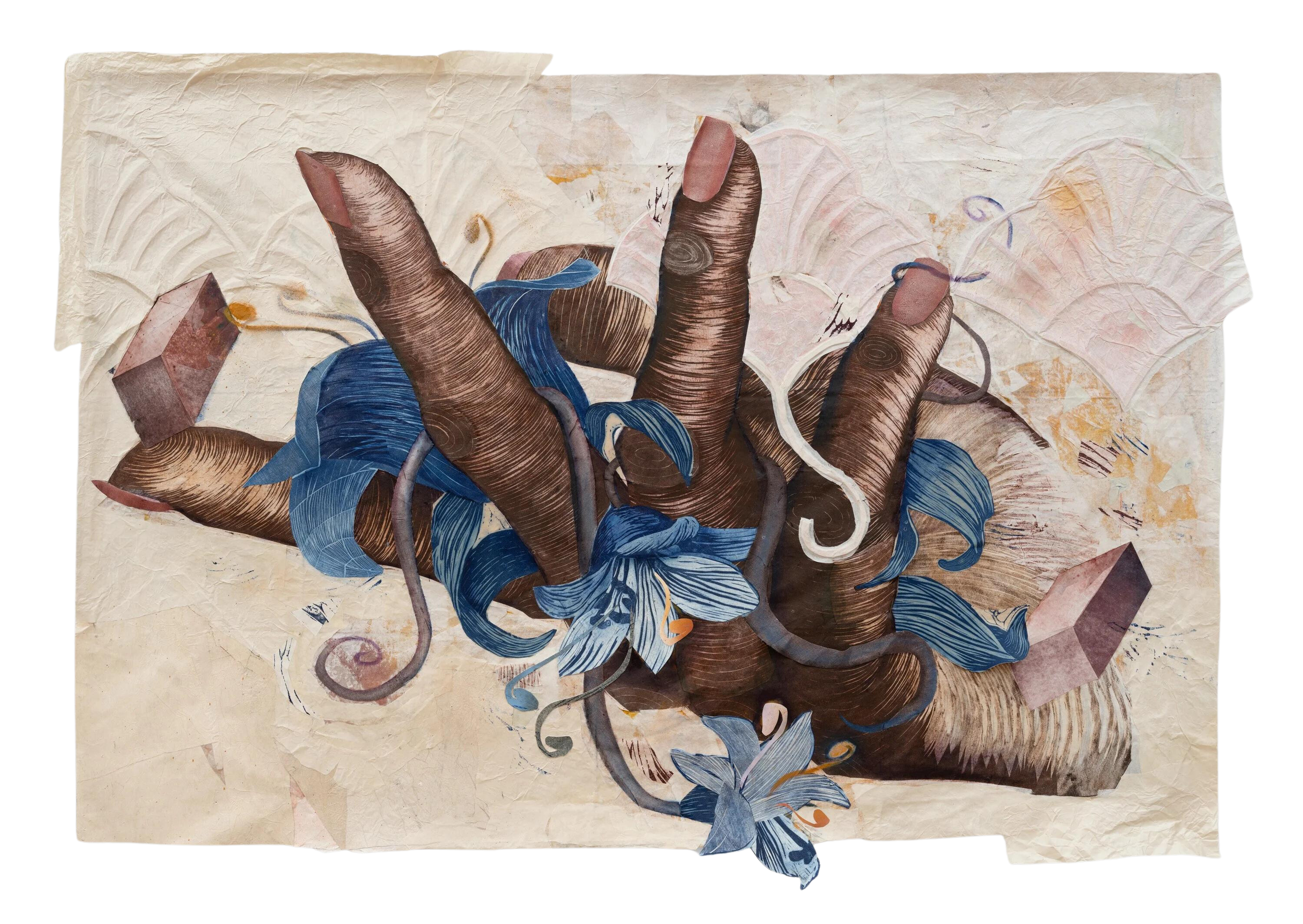
The astute observer will recognize the Fisher Building or the Fox Theater in the grids, angles and blocks cleverly embedded into each piece. From a distance, the portraits appear seamless, but upon closer examination, the lines, cracks and textures come into focus drawing attention to the artist’s process, which is rooted in woodblock printing.
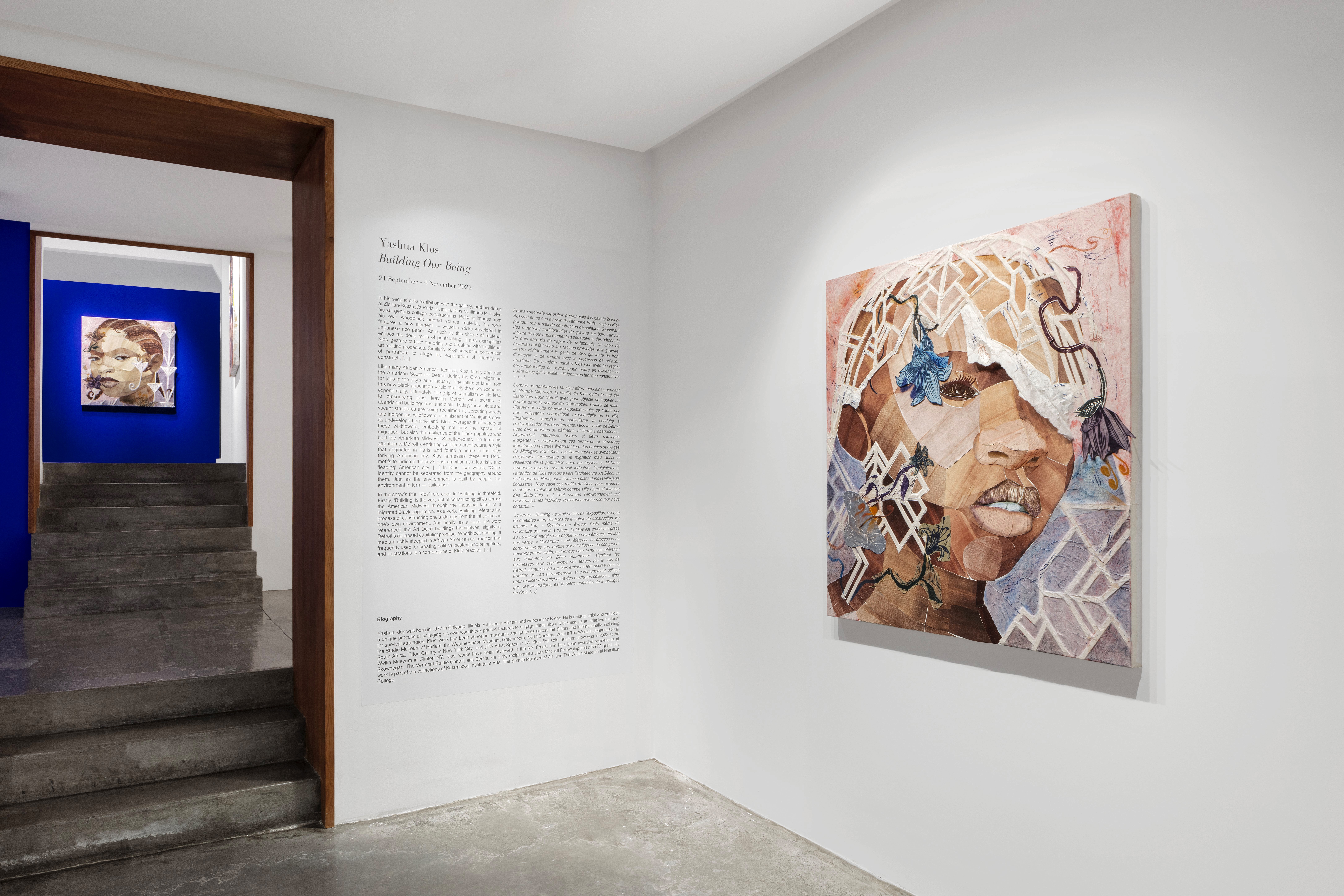
Klos creates images that look as if they have been sculpted out of wood; their three-dimensional aspect is an illusion, though he does play with texture and layering, which give the pieces a bas relief effect. Klos begins the process by creating a template on Photoshop. He then carves the image’s negative space into medium-density fiberwood (MDF); its pliability makes it easy to work with. Finally, he stretches muslin onto the carved MDF woodblock and uses a wooden spoon to press the ink onto the cloth. He says that this technique allows him to vary the pressure manually, which gives him more control over color density.7
While thoughtful references to Detroit are not overt, the artist’s work is in dialogue with them. The allusions are both inorganic and organic. Michigan wildflowers weave their way in, dangling from a corner, settling delicately on a forehead or blossoming sensually next to a woman’s lips while Art Deco styled martini glasses float in the fore and background. Fragments of the city stand in for the whole.
The faces take up the entire canvas and look at the viewer directly, unapologetically; they seem to say, “No, I will not turn away and yes, this is possible”. They are exquisitely beautiful, but when asked if they are idealized, Klos said, “no, they are beautiful, but they are not idealized; they are monumental”.8
He went on to explain that the portraits are based on real people and pointed out how rare it is to see Black faces represented as icons or placed on pedestals as heroes. The beauty, strength, and optimism these faces exude is perhaps aspirational as well as a way of paying homage to the people and places they represent.
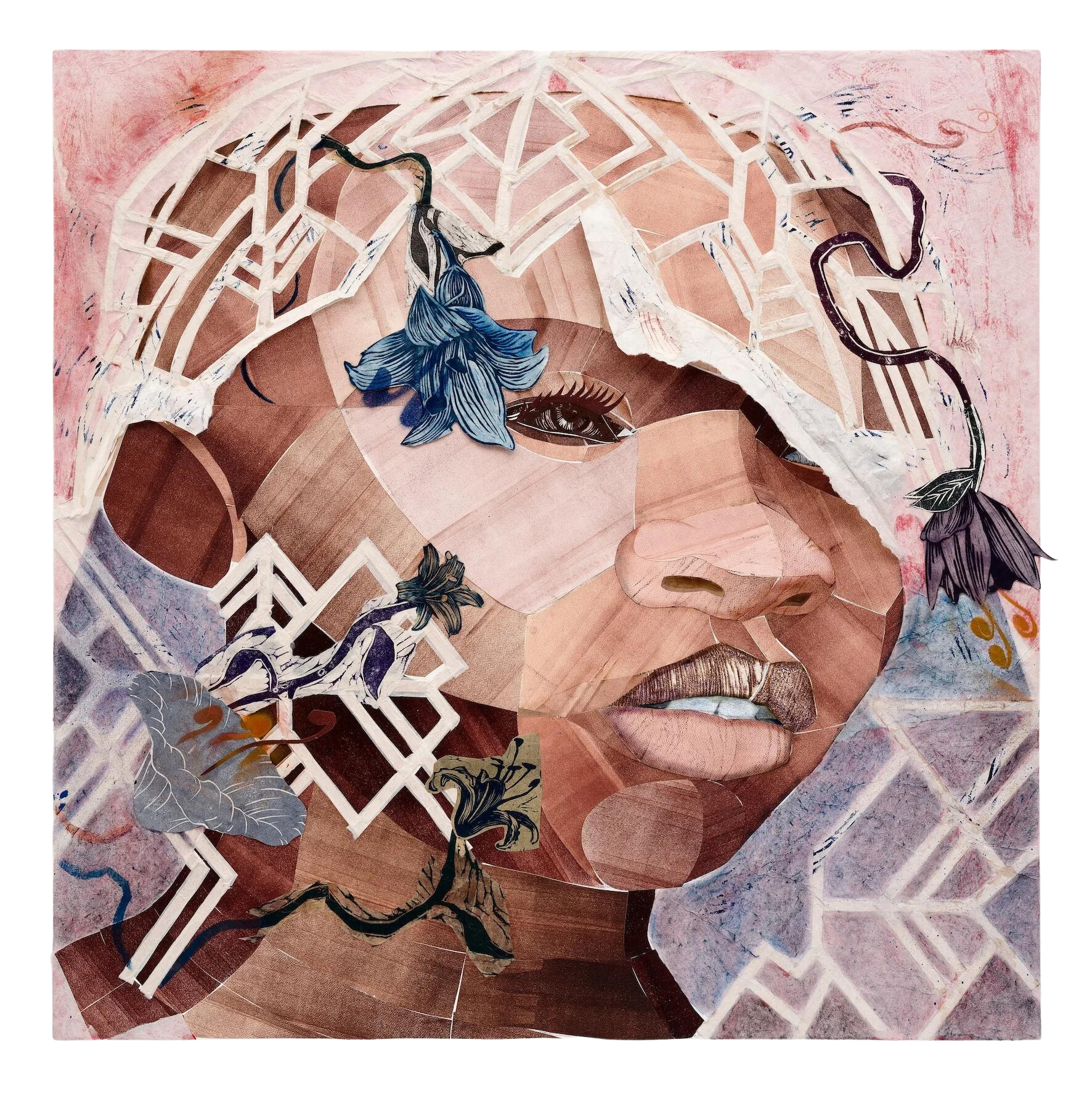
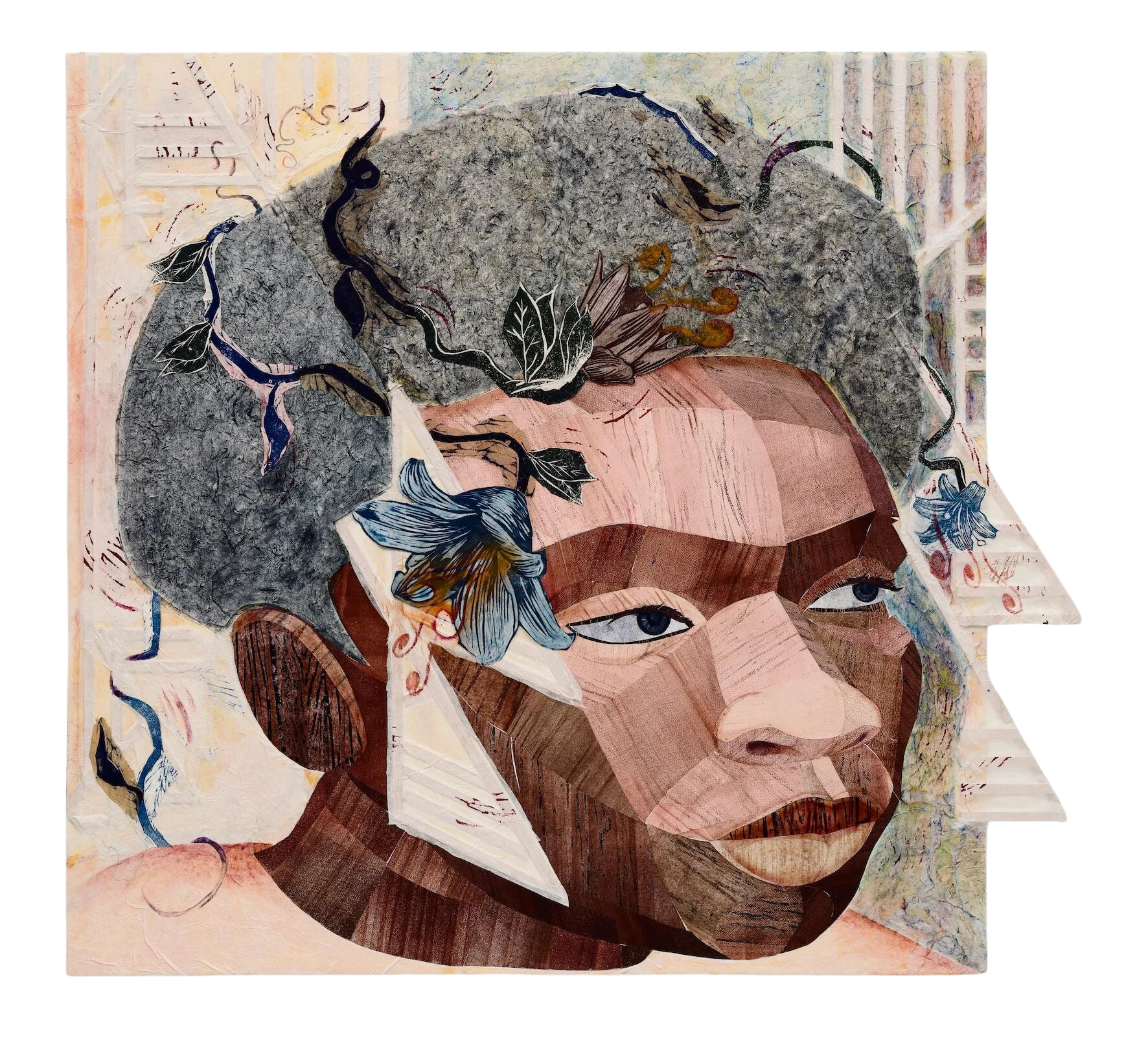
Several members of Klos’ Detroit family attended the opening of Building Our Being at the Zidoun-Bossuyt Gallery on September 21st. His mother (far left) also made the trip over and told us how proud she is of her son not only because of all that he has accomplished as an artist, but also because of the person he has become. That they flew over to attend Klos’ second solo exhibition with the gallery certainly attests to their generosity of spirit, but it perhaps also shows that they see themselves in Klos’ work and that he managed to capture the essence of their stories, tying them together to form a coherent whole while challenging dominant narratives of what it means to be Black and what it means to be from Detroit in Paris.
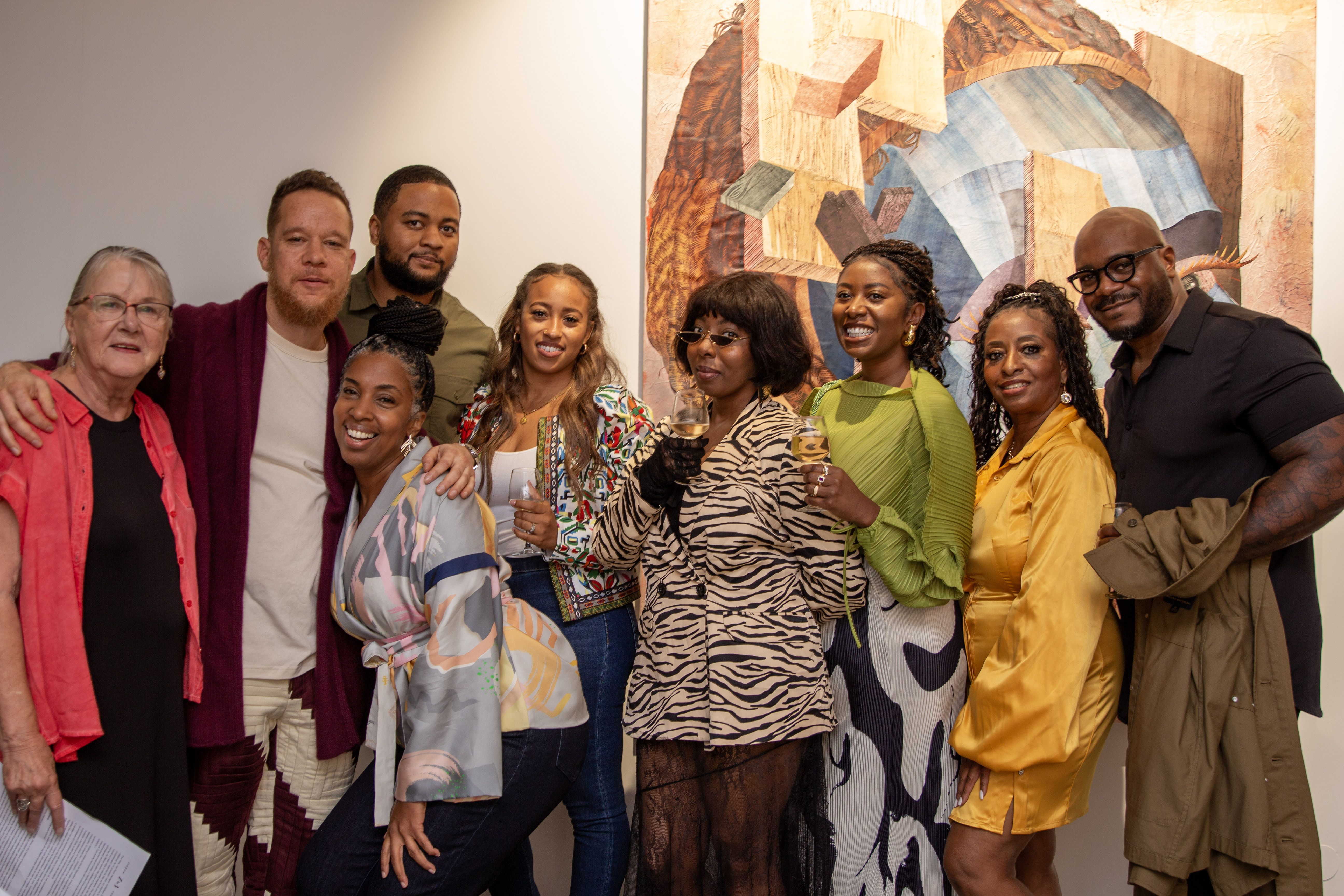
1. Jean-Michel Basquiat and Andy Warhol, “Basquiat × Warhol. Painting Four Hands,” Fondation Louis Vuitton, April 5, 2023, Link.
2. Robert Kassous, “Voyage Dans l’art : Une Nouvelle Galerie à Paris,” InfoTravel.fr, October 22, 2022, Link.. Accessed on October 3, 2023.
3. Z&B, September 22, 2022, Link. Accessed on October 3, 2023.
4. “Yashua Klos: Our Labour | Exhibition Video,” Ruth and Elmer Wellin Museum of Art, Hamilton College, YouTube, February 4, 2022, Link.. Accessed on October 3, 2023.
5. Billie Anania, “Essential Focus: Yashua Klos Interviewed,” BOMB Magazine, May 22, 2022, Link. Accessed on October 3, 2023.
6. Yashua Klos (artist) in discussion with the author, September 22, 2023.
7. Yashua Klos (artist) in discussion with the author, September 22, 2023.
8. Yashua Klos (artist) in discussion with the author, September 22, 2023.